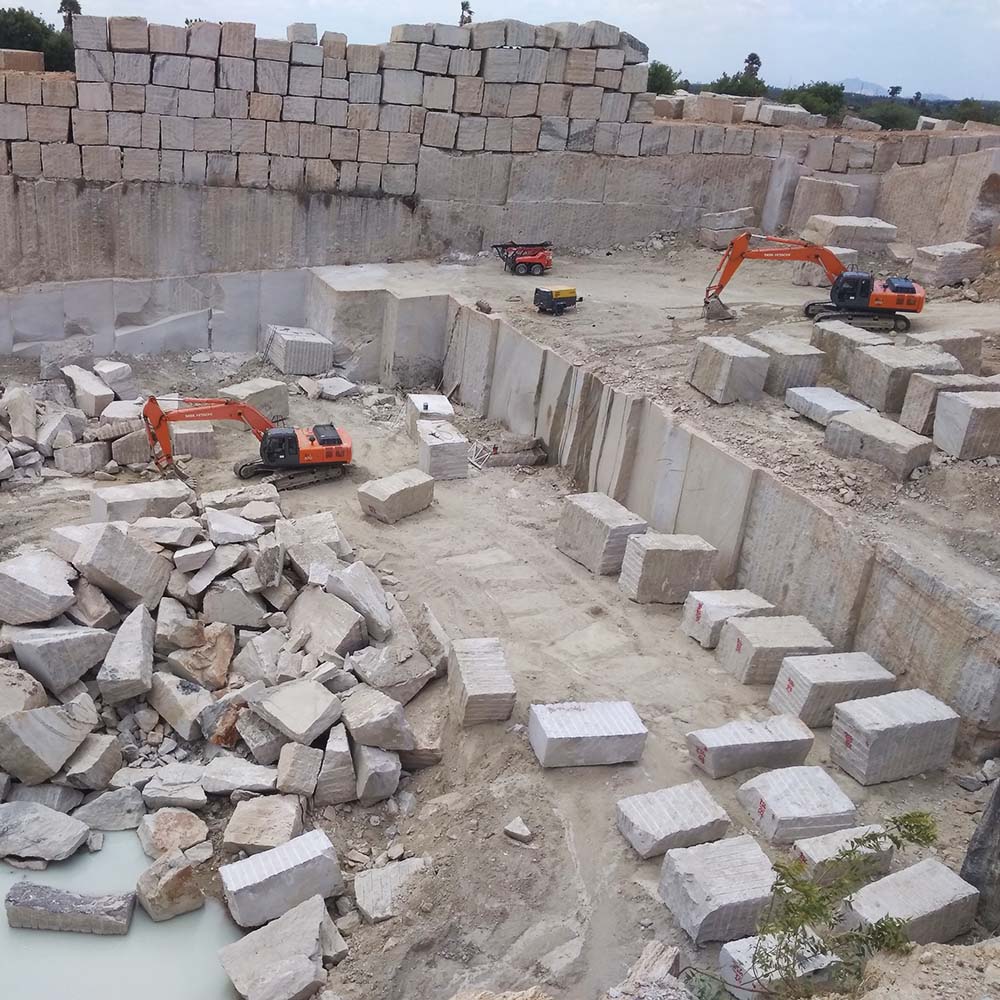A Journey Through Granite Quarries in South Africa: Unveiling Nature's Artistry
A Journey Through Granite Quarries in South Africa: Unveiling Nature's Artistry
Blog Article
Revealing the Mysteries of Granite Quarrying: Where Toughness and Elegance Meet
The world of granite quarrying is a world where the raw toughness of nature converges with human creativity to develop frameworks that stand the test of time with an air of beauty. From the midsts of quarries to the thorough sprucing up in workshops, the process of transforming granite right into building wonders is a complex dance of custom and technology. As we peer right into the depths of this ancient craft, we start to discover the concealed details that shape the very essence of our developed atmosphere.
The Beginnings of Granite Quarrying
In the record of building background, the beginnings of granite quarrying are shrouded in a tapestry of old workmanship and geological wonders. Going back to old Egypt and Mesopotamia, the removal of granite from quarries noted the start of a trip that would ultimately result in the development of a few of the globe's most famous frameworks.
Granite quarrying's origins can be traced to the knowledgeable craftsmens that identified the rock's longevity and visual allure. Via a mix of primitive devices and large determination, these early quarry workers unearthed granite blocks that would certainly come to be the structure blocks of people.
As people progressed, so did the methods of quarrying granite. The Romans, renowned for their engineering expertise, established sophisticated techniques for removing granite to build monuments, temples, and roadways that stood the test of time.
The tradition of these old quarrying methods remains to form contemporary design, with granite staying a symbol of strength and beauty in construction projects around the globe. (granite quarries in south africa)
Devices of the Quarrying Trade
The development of granite quarrying techniques from ancient human beings to modern-day times highlights the vital function played by the tools of the quarrying profession in shaping the industry's practices. In old times, quarrying devices were simple, frequently containing blades, hammers, and wedges made from materials like bronze or iron. These tools called for considerable workforce and time to essence granite obstructs from quarries.

In addition, the intro of pneumatic devices and high-powered equipment has actually substantially lowered the physical labor called for in quarrying procedures, improving employee security and efficiency. As the quarrying market continues to innovate, the tools of the profession continue to be at the center of driving progression and forming the future of granite removal.
Drawing Out Blocks of Granite
Utilizing precision equipment and progressed methods, the extraction of granite blocks from quarries has actually come to be an innovative procedure in the contemporary quarrying industry. The initial action includes determining the location and dimension of the granite down payment to establish the most efficient removal technique. When a suitable website is chosen, the extraction procedure starts with the drilling of openings for the positioning of explosives. Regulated blowing up techniques are after that utilized to break apart pop over to this site the granite right into workable sections.

Sprucing Up and Finishing Techniques
To attain a perfect surface on granite blocks, skilled craftsmens utilize a collection of precise sprucing up and completing techniques. After the first extraction and forming procedures, the granite blocks go through an extensive polishing stage to enhance their all-natural charm and durability. One usual technique made use of in polishing granite is ruby abrasion, where industrial rubies are utilized to grind and brighten the stone to a smooth coating. This process not just Discover More Here creates a shiny surface area however additionally makes sure harmony in shade and appearance across the granite block.
In enhancement to sprucing up, finishing methods are used to additional refine the granite's look. These techniques may consist of flaming, sharpening, or brushing, each offering distinct structures and coatings to suit different aesthetic preferences. Flaming, for circumstances, entails exposing the granite surface area to high temperatures to produce a rough, distinctive coating, perfect for exterior applications where slip-resistance is important. Developing, on the various other hand, supplies a matte coating that is smooth to the touch, excellent for interior countertops and flooring. By meticulously picking and applying these polishing and completing strategies, craftsmens can transform raw granite blocks into exquisite pieces that showcase both strength and elegance.

Environmental Influence and Sustainability
With the growing focus on environmental awareness in the industry, granite quarrying methods are increasingly inspected for their influence on natural deposits and lasting sustainability. Quarrying for granite can have significant ecological implications. The extraction procedure frequently entails using heavy equipment, nitroglycerins, and huge quantities of water, resulting in environment damage, soil erosion, and water contamination. Additionally, the transport of granite from quarries to refining facilities generates carbon emissions, better adding to ecological destruction. granite quarries in south africa.
To mitigate these effects and guarantee sustainability in granite quarrying, industry stakeholders are embracing different actions. Applying advanced modern technologies to lower energy usage and water usage, recovering quarried land for environmental repair, and advertising accountable sourcing methods are some techniques being utilized. Moreover, accreditations such as the Forest Stewardship Council (FSC) and the Leadership in Energy and Environmental Design (LEED) help customers recognize eco-friendly granite products.
Conclusion
To conclude, granite quarrying is a procedure that requires specialized devices and methods to extract blocks of granite and brighten them to a high level of finish. While the ecological impact of quarrying can be substantial, efforts are being made to boost sustainability methods in the sector. Generally, granite quarrying is a delicate equilibrium between he has a good point using the stamina and style of this natural rock while reducing its effect on the atmosphere.
Report this page